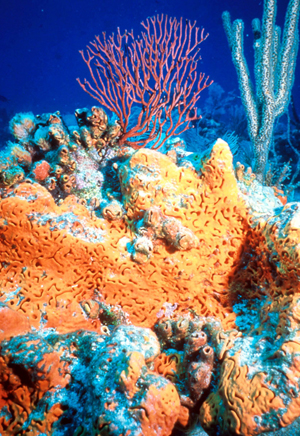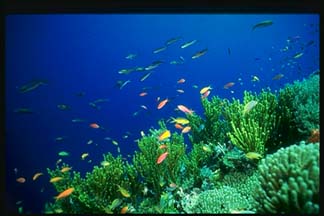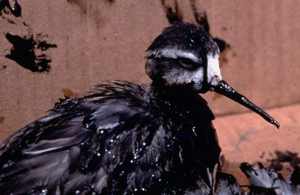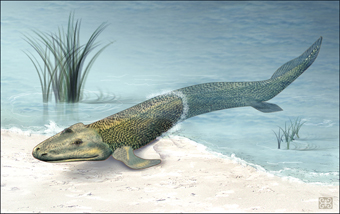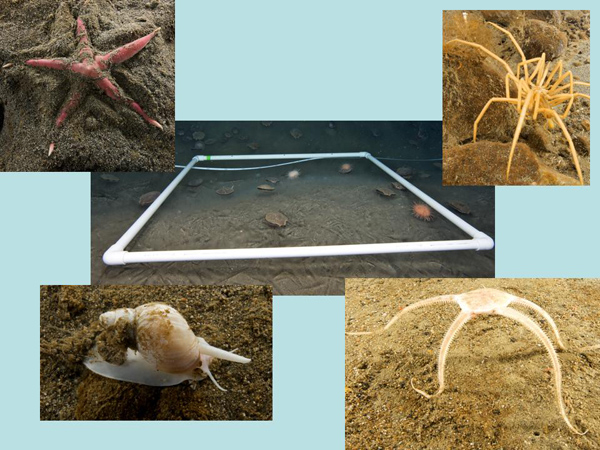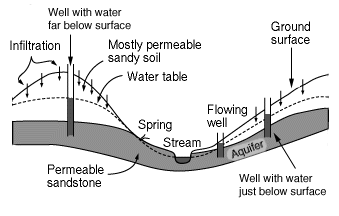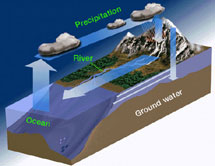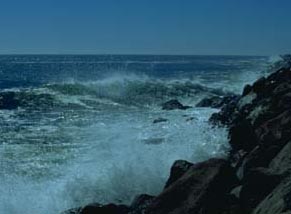Click on image for full size
Courtesy of NOAA
Life in the Shallow Ocean
There are thousands of types of living things at the bottom of shallow parts of the ocean, where light can penetrate. Some live in places where the ocean floor is sandy or muddy. Others live in places where the ocean floor is rocky.
Where the shallow ocean floor is sandy or muddy, there are often animals like sand dollars, sea stars, and crabs. There may be snails plowing across the sand and hermit crabs – arthropods wearing snail shells. Some fish and sharks prefer to live near the bottom just above the sand. Sea grass, which looks like a lawn of tall grass, sometimes grows in the sediment.
Other animals, such as clams, worms, and sea urchins that have short spines, spend most of their lives burrowing through the sand or mud. Many animals that live in the sediments are deposit feeders, eating sand or mud and digesting the organic material in it. Others, like clams, have a tube that reaches to the surface of the sediment where it takes in seawater and filters the plankton and other food from it.
Where the shallow ocean floor is rocky and the water is cold in temperate and polar oceans, habitats called kelp forests can form. These are very unusual places where large brown algae called kelp grow from the ocean floor all the way to the surface of the water – about 20 meters (66 feet) high. The huge kelp creates an underwater forest where many different animals live. Sea lions swim between the kelp and catch fish. Playful sea otters eat invertebrates like urchins and abalone.
In tropical, warm water, coral reefs grow on rocky areas of the shallow ocean floor. Coral reefs are named after the coral animals whose skeletons make up most of the reef rocks, but reefs are full of hundreds of other types of animals and algae. Many species of colorful fish can be found swimming through reefs. Some of them eat algae from the surface of the reef. Others eat invertebrates or other fish. Invertebrates like sponges, molluscs, sea fans, worms, crabs, and echinoderms are common too.
While different species are found in different areas of the shallow ocean, the general types of animals, algae, and plants that you will find in different places can be similar. For example, even though the species of kelp is not the same, kelp forests are found in several different ocean basins including the Atlantic Ocean, Pacific Ocean, and the Southern Ocean.


